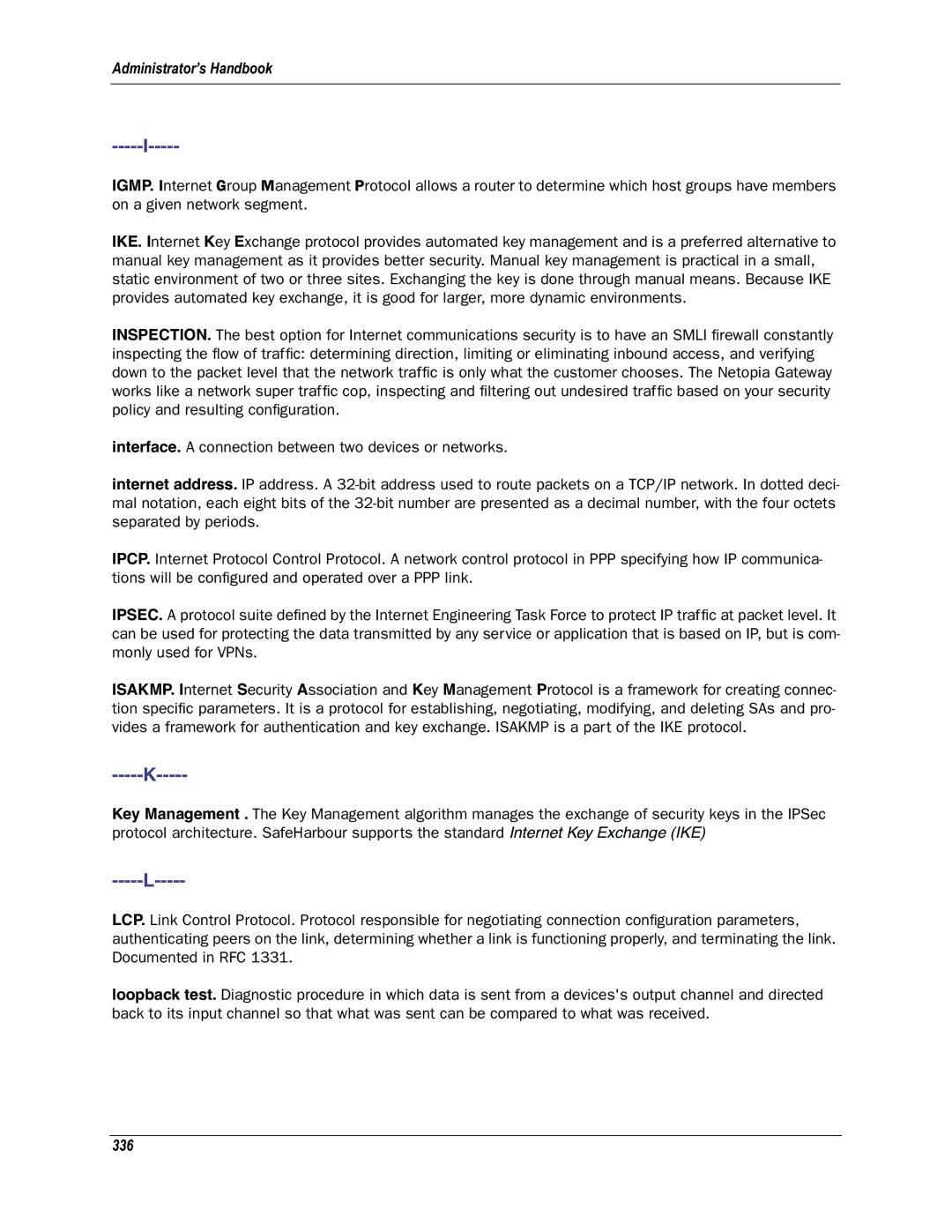
Administrator’s Handbook
IGMP. Internet Group Management Protocol allows a router to determine which host groups have members on a given network segment.
IKE. Internet Key Exchange protocol provides automated key management and is a preferred alternative to manual key management as it provides better security. Manual key management is practical in a small, static environment of two or three sites. Exchanging the key is done through manual means. Because IKE provides automated key exchange, it is good for larger, more dynamic environments.
INSPECTION. The best option for Internet communications security is to have an SMLI firewall constantly inspecting the flow of traffic: determining direction, limiting or eliminating inbound access, and verifying down to the packet level that the network traffic is only what the customer chooses. The Netopia Gateway works like a network super traffic cop, inspecting and filtering out undesired traffic based on your security policy and resulting configuration.
interface. A connection between two devices or networks.
internet address. IP address. A
IPCP. Internet Protocol Control Protocol. A network control protocol in PPP specifying how IP communica- tions will be configured and operated over a PPP link.
IPSEC. A protocol suite defined by the Internet Engineering Task Force to protect IP traffic at packet level. It can be used for protecting the data transmitted by any service or application that is based on IP, but is com- monly used for VPNs.
ISAKMP. Internet Security Association and Key Management Protocol is a framework for creating connec- tion specific parameters. It is a protocol for establishing, negotiating, modifying, and deleting SAs and pro- vides a framework for authentication and key exchange. ISAKMP is a part of the IKE protocol.
Key Management . The Key Management algorithm manages the exchange of security keys in the IPSec protocol architecture. SafeHarbour supports the standard Internet Key Exchange (IKE)
LCP. Link Control Protocol. Protocol responsible for negotiating connection configuration parameters, authenticating peers on the link, determining whether a link is functioning properly, and terminating the link. Documented in RFC 1331.
loopback test. Diagnostic procedure in which data is sent from a devices's output channel and directed back to its input channel so that what was sent can be compared to what was received.
